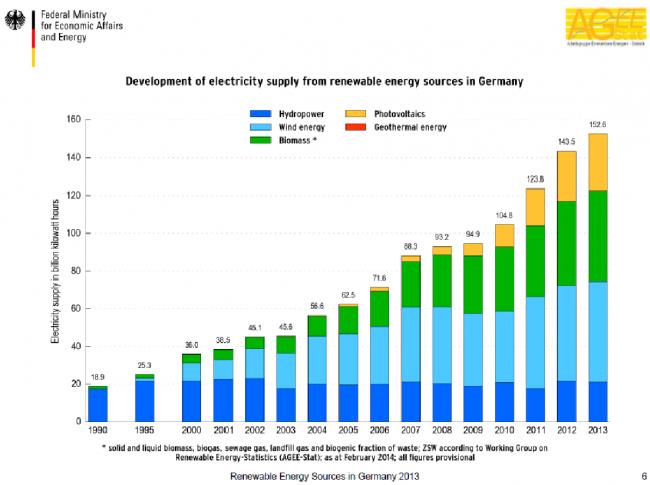Germany faces the challenge of disposing of obsolete windmills

Development of renewable energy in Germany. Yellow - solar panels, green - biomass, blue - windmills, blue - hydroelectric power stations.
Germany, a European pioneer in the use of renewable energy, has come close to an unusual problem associated with outdated windmills. It becomes unprofitable to maintain old windmills and to dismantle them expensive for disposal - and the very possibility of their disposal is in question.
Germany began to actively install wind turbines in the mid-90s. After the events at the Fukushima-1 NPP in 2011 and the appearance of the next wave of panic in front of atomic energy associated with it, the transition to "environmentally friendly" energy went at an accelerated pace.
At the moment, more than 25,000 windmills are operating in the country. Since 2011, nine nuclear power plants have been closed, and currently in Germany only 16% of all energy consumed is produced at nuclear power plants. But "environmental" energy has its own difficulties.
Firstly, the pace of transition to wind energy is even too fast - so much so that Germany has to export surplus energy to neighboring countries. This increases the risk of blackouts in case of sudden power outages.
Secondly, the oldest windmills in Germany are already starting to be 20 years old. And according to local laws, a 20-year-old turbine is subject to disassembly and recycling - unless the owner spends on its repair and modernization and proves the device’s operability to a special commission. And next year, 7 thousand out of 25 thousand working windmills will be 15 years old.
The fact that over the past 10 years the technology of energy production from the wind has taken a big step forward plays a role, and modern windmills are able to generate several times more energy than their predecessors. Already replacing the turbine with a new one instead of repairing the old one looks more profitable. However, repairing old windmills becomes unprofitable for one more reason.
Renewable energy production in Germany is subsidized by the state. There are fixed tariffs for the energy generated by windmills for its purchase - high enough for the windmill to pay off. But the subsidies cease after 20 years of using the windmill, after which its maintenance becomes economically inexpedient.
At the same time, the decommissioning and disposal of a windmill, costing € 30,000 per windmill . Since windmills have to be made of gigantic proportions to produce enough energy, two 150-ton cranes have to be used to disassemble the windmill. If, as some owners do, thoughtlessly toss a huge windmill onto the ground, then after that it will be much more difficult to dispose of or sell it on the secondary market.
A certain number of windmills (and these are constructions of 160 meters high and weighing more than one hundred tons) can be put into metal processing. Also, according to experts, there is a demand for German windmills in the secondary markets in Poland, Italy and Russia. But nevertheless, the complexity of the task of recycling old giant structures increases as their number increases.
And in a few years, coastal wind turbines standing on the high seas will become obsolete - they began to be installed only in 2010, and so far no one has tried to dismantle them.
